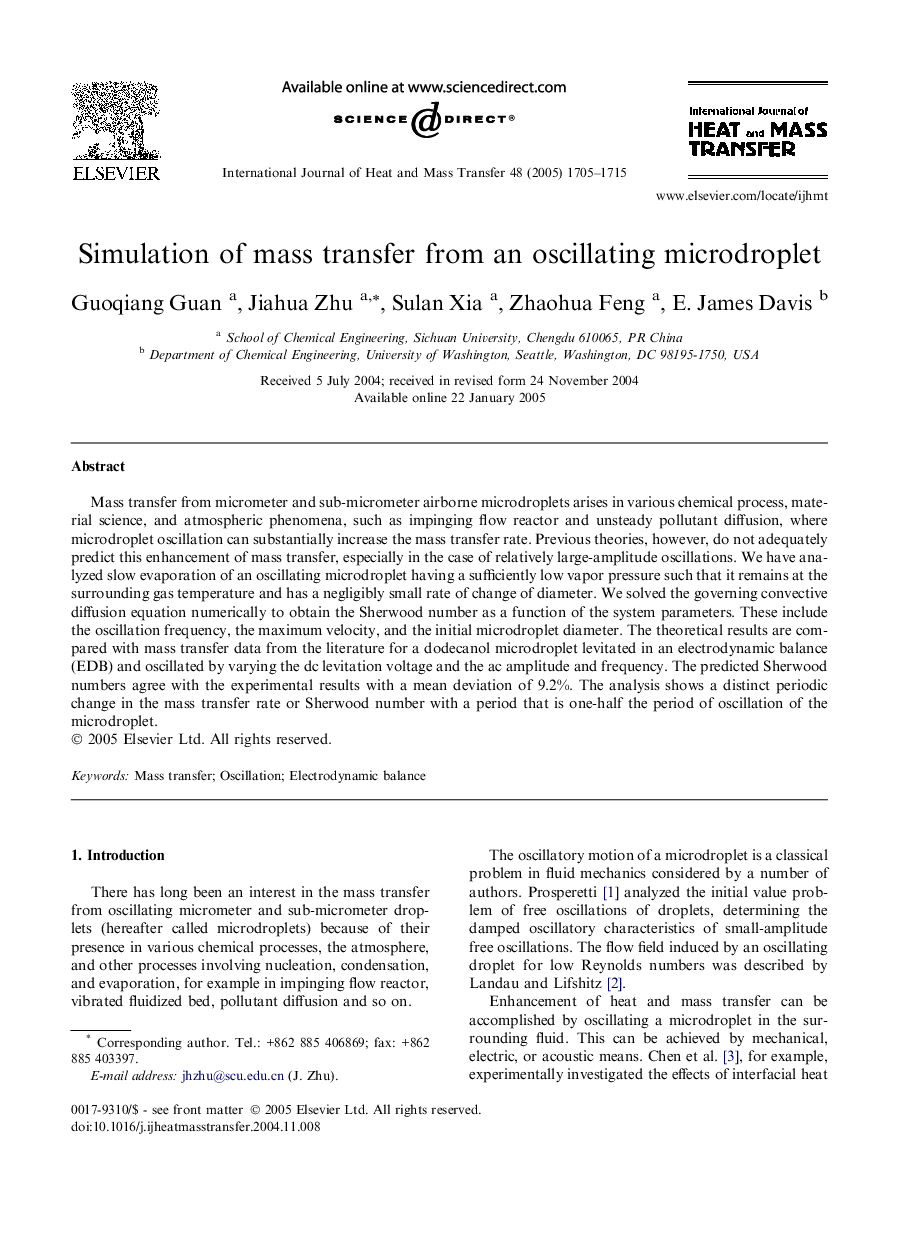| Article ID | Journal | Published Year | Pages | File Type |
|---|---|---|---|---|
| 9691566 | International Journal of Heat and Mass Transfer | 2005 | 11 Pages |
Abstract
Mass transfer from micrometer and sub-micrometer airborne microdroplets arises in various chemical process, material science, and atmospheric phenomena, such as impinging flow reactor and unsteady pollutant diffusion, where microdroplet oscillation can substantially increase the mass transfer rate. Previous theories, however, do not adequately predict this enhancement of mass transfer, especially in the case of relatively large-amplitude oscillations. We have analyzed slow evaporation of an oscillating microdroplet having a sufficiently low vapor pressure such that it remains at the surrounding gas temperature and has a negligibly small rate of change of diameter. We solved the governing convective diffusion equation numerically to obtain the Sherwood number as a function of the system parameters. These include the oscillation frequency, the maximum velocity, and the initial microdroplet diameter. The theoretical results are compared with mass transfer data from the literature for a dodecanol microdroplet levitated in an electrodynamic balance (EDB) and oscillated by varying the dc levitation voltage and the ac amplitude and frequency. The predicted Sherwood numbers agree with the experimental results with a mean deviation of 9.2%. The analysis shows a distinct periodic change in the mass transfer rate or Sherwood number with a period that is one-half the period of oscillation of the microdroplet.
Related Topics
Physical Sciences and Engineering
Chemical Engineering
Fluid Flow and Transfer Processes
Authors
Guoqiang Guan, Jiahua Zhu, Sulan Xia, Zhaohua Feng, E. James Davis,
